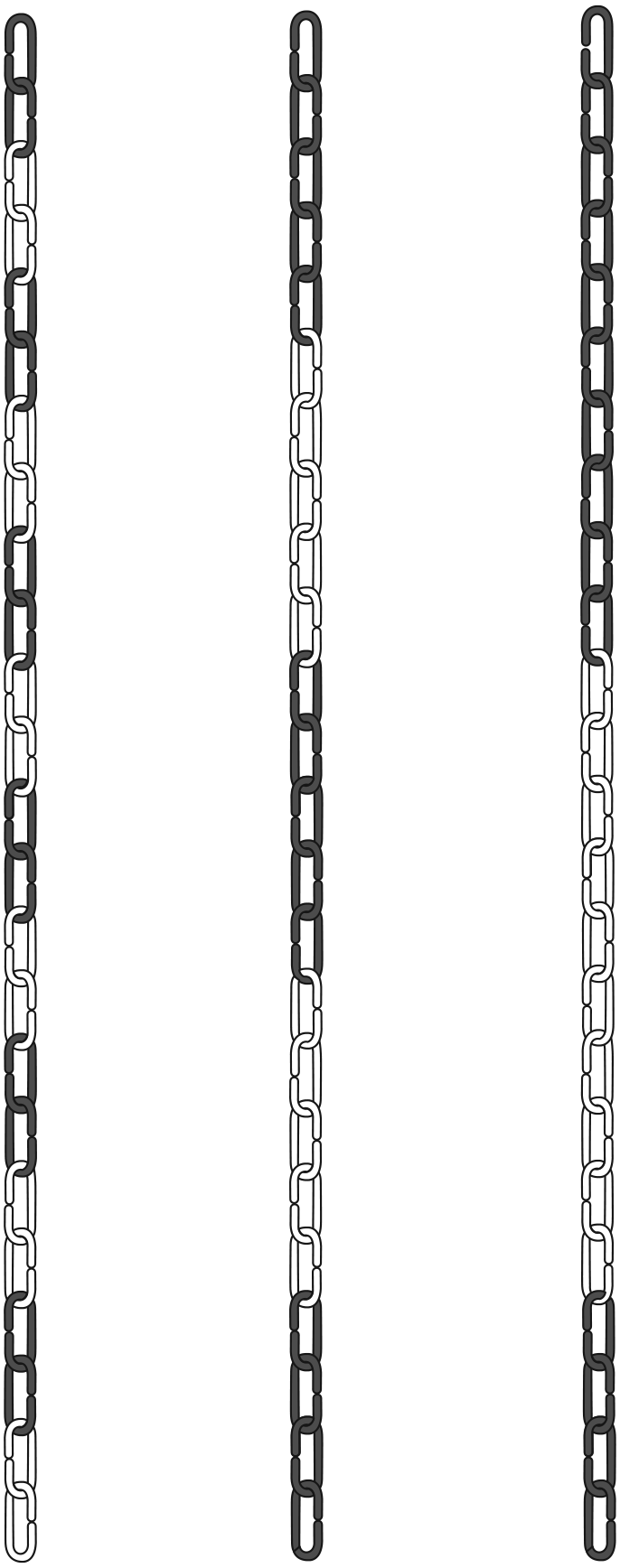Group and Count by Fives and Tens
Est. Class Sessions: 2–3Developing the Lesson
Part 2: Group and Count Connecting Links
Count 24 Links. Show students a chain made of 24 links that does not have the colors organized in any way.
Ask:
Tell students that they are going to measure objects in the room using chains made of links. Demonstrate measuring your desk or another object with the chain. Begin counting by ones.
Ask:
Distribute a two-color collection of about 50 individual links to each student pair. Have students set 24 aside.
Ask:
Discuss students' strategies. Some students may choose to organize their chains by twos. Others may choose to count by fives or tens. As groups choose ways to organize their chains, make sure that there will be at least two chains organized in twos, another two chains in fives, and two chains in tens in the class. Remind students that they might have leftovers that they will count by ones.
When students have completed their chains, ask groups to come to the front of the class and count their chains, skip counting by the appropriate number and counting the leftovers by ones. As each group finishes counting, pin the chains to a bulletin board so that they hang vertically and students can compare the lengths. See Figure 2.
Ask:













